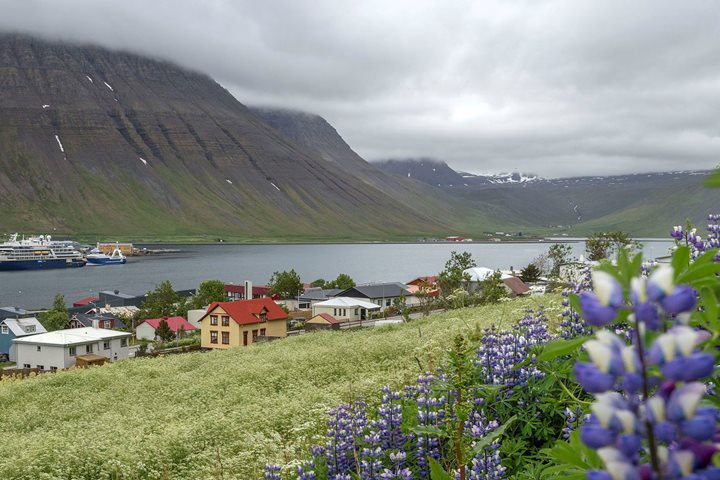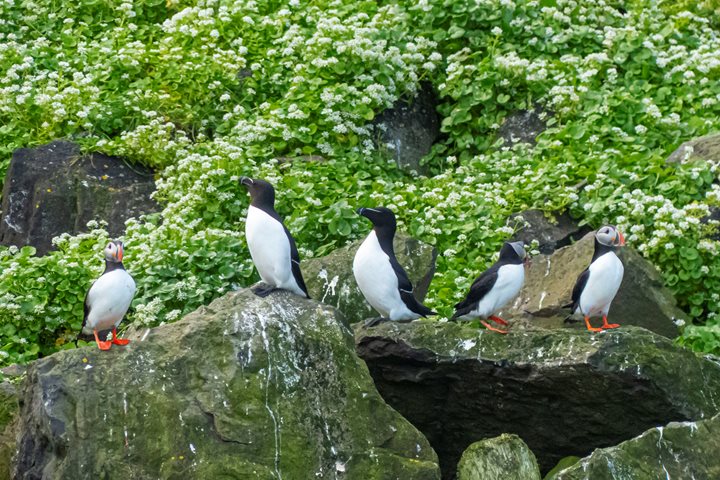Sailing all night from off the ice-carved peninsulas and fjords of Vestfjirđir, we arrived this morning in beautiful Breiđafjörđur, the “Broad Fjord.” Our destination is historic Flatey (Flat Island), one of the 2,700 islands and skerries in this great fjord.
Under a partly cloudy sky and in a brisk wind we land the Zodiacs on a gravel boat ramp at the edge of the picturesque village of Flatey with colorful houses, mostly summer homes. Here we are free to hike wherever we please with plenty of time to amble on this, yes, mostly flat island. The sun comes out and the grasses with which the island is covered bend and wave in the wind. Pleasant paths lead us to every part of the island. Birds are everywhere: red-necked phalaropes swirl in the water near the landing; arctic terns cry out, “Kria, kria” and carry small fish to their chicks hidden in the grasses; redshanks scold from the air and from their perches on fence posts; when approached too closely snipes burst skyward with sharp cries; in small streams and ponds, common eider hens tend to their ducklings.
At the end of the trail on northeast Flatey are cliffs where atlantic puffins, black guillemots, and northern fulmars are nesting. Here we are greeted by a lone, but sociable, greylag goose. An oystercatcher naps on a patch of bright moss near the shore. A fulmar tends to her very young, white and fluffy new chick. Puffins fly out to sea and return to their young with beaks full of small fishes. Our naturalists Santiago and Doug are here to tell us more about these birds and their lives.
The church sits on a hill just at the edge of the village. Here naturalist Tom, tells us the interesting history of this building. Where else can you see a painting of Jesus in an Icelandic fisherman’s sweater?
In the village next to Hotel Flatey is a café that serves the most delicious cake and good coffee. Outdoors children play and a farmer drives through on her tractor. In hayfields the hay lies drying in windrows and a few sheep are seen roaming at large. One ewe has three (!) lambs, all wanting to nurse at once. We enjoy this beautiful and peaceful island and a tour of a black-legged kittiwake colony on our ride back to National Geographic Explorer.
In the afternoon we sail northwest to the famous Látrabjarg bird cliffs, site of the largest seabird-nesting colony in all of Europe. This 14-kilometer-long, 440-meter-high cliff is formed of layer upon layer of basaltic lava flows. The lava flows form small shelves in the great cliff and here Brünnich’s and common guillemots, razorbills, northern fulmars, and Atlantic puffins nest by the hundreds of thousands. It is an amazing sight on this beautiful, sunny afternoon.
At last we lift the anchor and set our course for Reykjavík and the end of this adventure-filled expedition. This last evening of our voyage we enjoy the camaraderie of new friends and shared adventures at Captain’s Farewell cocktail party and dinner.






